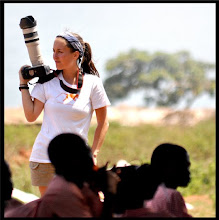The Karisoke trackers assigned to Pablo's group made an intense search the following day when, again, neither gorilla was located and the field staff began to believe that the two gorillas had left together. After several days of searching, on Sunday, May 13 the team found a trail (of one of the two gorillas) coming from Pablo’s group. The trail led in the direction of the Karisimbi group, directly to the nest of a silverback. The Karisoke trackers called the RDB staff in charge of monitoring the Karisimbi group to inquire if they had observed any unfamiliar gorillas near their group. The RDB trackers had in fact seen an unknown female arrive in the group a few days prior.
With this news, Karisoke's Pablo trackers trekked to the Karisimbi group and successfully identified the unknown female as Isura. They reported that she is fine and perfectly integrated into her new group. She was often observed close to Ruhuka, a female that transferred from Pablo's to Susa’s group in 2009, grooming and resting in close physical contact. The two females are familiar with each other from the years they spent together in Pablo's group.
Even Getty, the group’s dominant silverback, was seen resting close to Isura, meticulously grooming her. Although he displayed once towards her, he quickly calmed down and began to warm to the new female. “Even if the dynamic of the transfer is still not clear, the staff of the Karisoke Research Center was happy to see Isura healthy and well established in the Karisimbi group” says Karisoke Gorilla Program Manager Veronica Vecellio. “A missing gorilla, especially if it is a female, always raises concerns and requires a massive effort for a search to be carried out on top of the routine daily tracking of all gorilla groups.”
As for the dispersed silverback Mafunzo, the field staff was unable to locate him. He is a silverback and, even if he is on the young side, he is still within the normal age range to strike out on his own. In fact, Mafunzo had left and rejoined the group twice before this last disappearance. It is likely that the nest found close to the Karisimbi group was in fact his nest, if he was on the trail of Isura before she made the final transfer. Mafunzo’s decision to become a lone silverback is not surprising, as he is the brother of Pablo's group’s dominant silverback, Cantsbee, and related to most of the Pablo group's gorillas, including sexually active females.
As of this afternoon, the field staff reported that Pablo's group has split into two subgroups once again, with Cantsbee leading 16 individuals and Gicurasi leading 26. The entire group nested together last night in the same location where Cantsbee's subgroup is ranging at the present time. Because the bamboo is a limited resource, it is very likely that Gicurasi led another group to an area with more food availability, to avoid overcrowding.
Jessica Burbridge, Field Communications Officer
All Images © The Dian Fossey Gorilla Fund International
To read more of the Fossey Fund blog, please click here.

